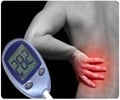Higher-intensity physical activity, rather than total activity volume, significantly reduces mortality risk, especially from cardiovascular diseases.

- Intensity is a stronger predictor of reduced mortality than overall activity volume
- Cardiovascular mortality risk decreases by 41% with higher activity intensity
- Continuous intense exercise is more beneficial than sporadic, low-intensity activity
Intensity or volume: the role of physical activity in longevity
Go to source). The study analyzed physical activity patterns and their association with mortality risk. Data were collected over an 81-month follow-up for all-cause mortality and an 82-month follow-up for cardiovascular disease mortality, covering a large sample size.
High-intensity physical activity lowers mortality risk by up to 41% for cardiovascular disease! #longevity #medindia #exercise’
Curvilinear Inverse Dose-Response Relationships
The study found curvilinear inverse dose-response relationships for both all-cause mortality and cardiovascular disease mortality risk when considering physical activity patterns. These relationships are described in the following subsections.All-Cause Mortality Risk
- There was a 14.4% reduction in all-cause mortality risk (95% CI: -8.3% to -20.1%) when moving from the 25th to 50th percentile of AvAcc (Average physical activity accumulated across the day).
- For IG (Intensity Gradient, a measure of the intensity of physical activity), the risk reduction was much larger, at 37.1% (95% CI: -30.0% to -43.4%) from the 25th to 50th percentile.
Cardiovascular Disease Mortality Risk
Interestingly, the risk reduction for cardiovascular disease mortality was significant only for IG, showing a 41.0% reduction (95% CI: -26.7% to -52.4%) from the 25th to 50th percentile. There was no substantial effect observed for AvAcc in this case.
Plateau Points for Intensity and Volume
The risk reduction for both all-cause and cardiovascular disease mortality plateaued at specific activity levels:- AvAcc: 35-45 mg of accumulated activity
- IG: Between -2.7 to -2.5
Intensity vs. Volume in Reducing Mortality Risk
The study concluded that intensity of physical activity is the primary factor associated with reduced mortality risk. Although the overall volume of physical activity (AvAcc) does play a role, it is secondary to the impact of intensity (IG), particularly when it comes to cardiovascular disease mortality.All-Cause Mortality: Both intensity and volume contribute to reducing all-cause mortality risk, but intensity remains a stronger determinant.
Cardiovascular Disease Mortality: Intensity is the main driver for reducing cardiovascular disease mortality risk, with little to no effect from volume alone.
To provide practical guidance, the study generated centile curves for both physical activity volume and intensity. These curves serve as tools to help individuals and healthcare professionals determine the most effective physical activity levels for promoting longevity.
Importance of Continuous Bouts of Intense Physical Activity
One of the most significant findings of the study is that accumulating physical activity in continuous bouts of higher intensity yields better health outcomes than sporadic, low-intensity activity throughout the day. This emphasizes the need to incorporate bursts of intense exercise into daily routines for optimal health benefits.The study highlights that the intensity of physical activity is a more critical factor for reducing mortality risk than the overall volume, particularly in relation to cardiovascular disease mortality.
While accumulating physical activity throughout the day is beneficial, the focus should be on integrating higher-intensity activities to achieve the best health outcomes and longevity. The centile curves created from the study provide a valuable framework for setting realistic and beneficial physical activity targets.
Reference:
- Intensity or volume: the role of physical activity in longevity - (https://pubmed.ncbi.nlm.nih.gov/39276370/)
Source-Medindia















